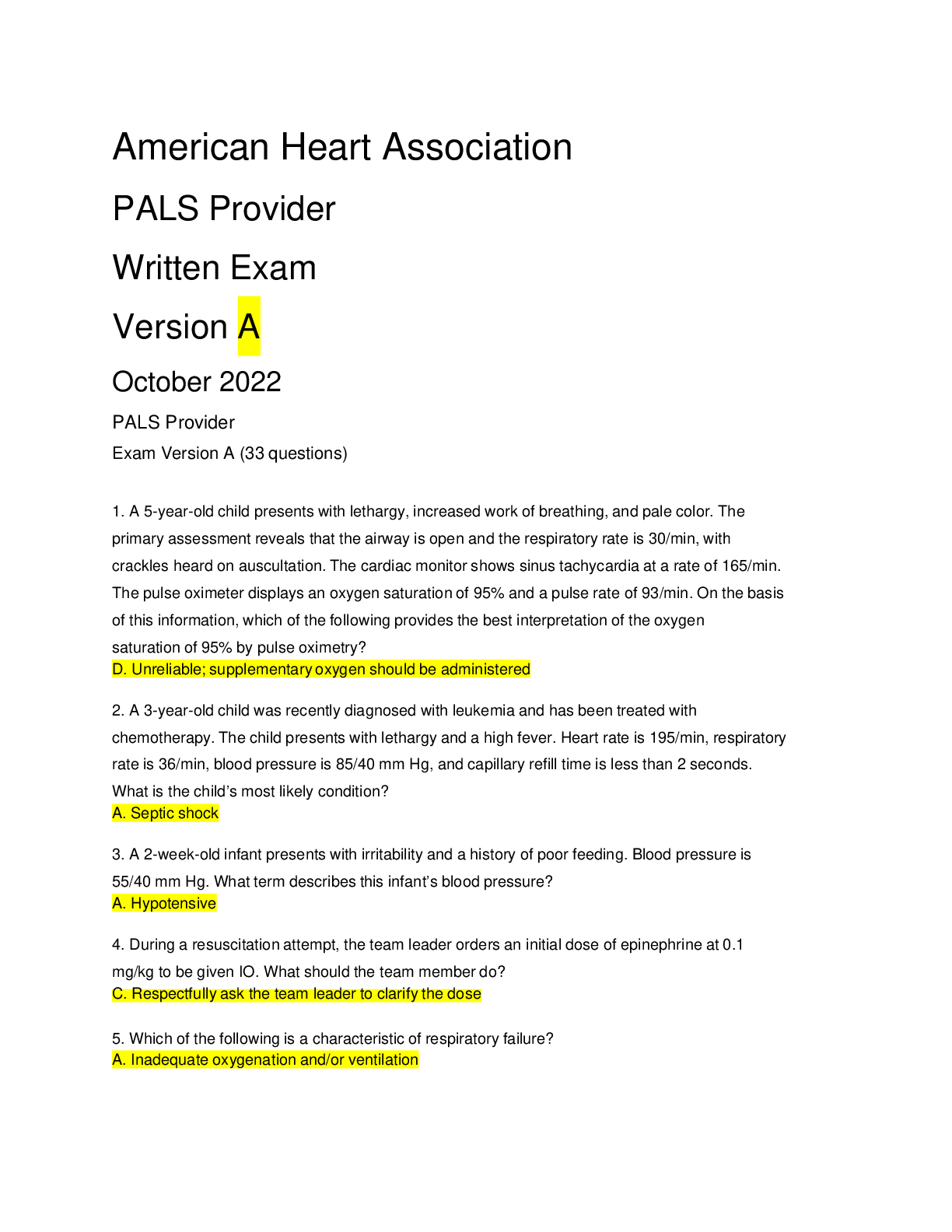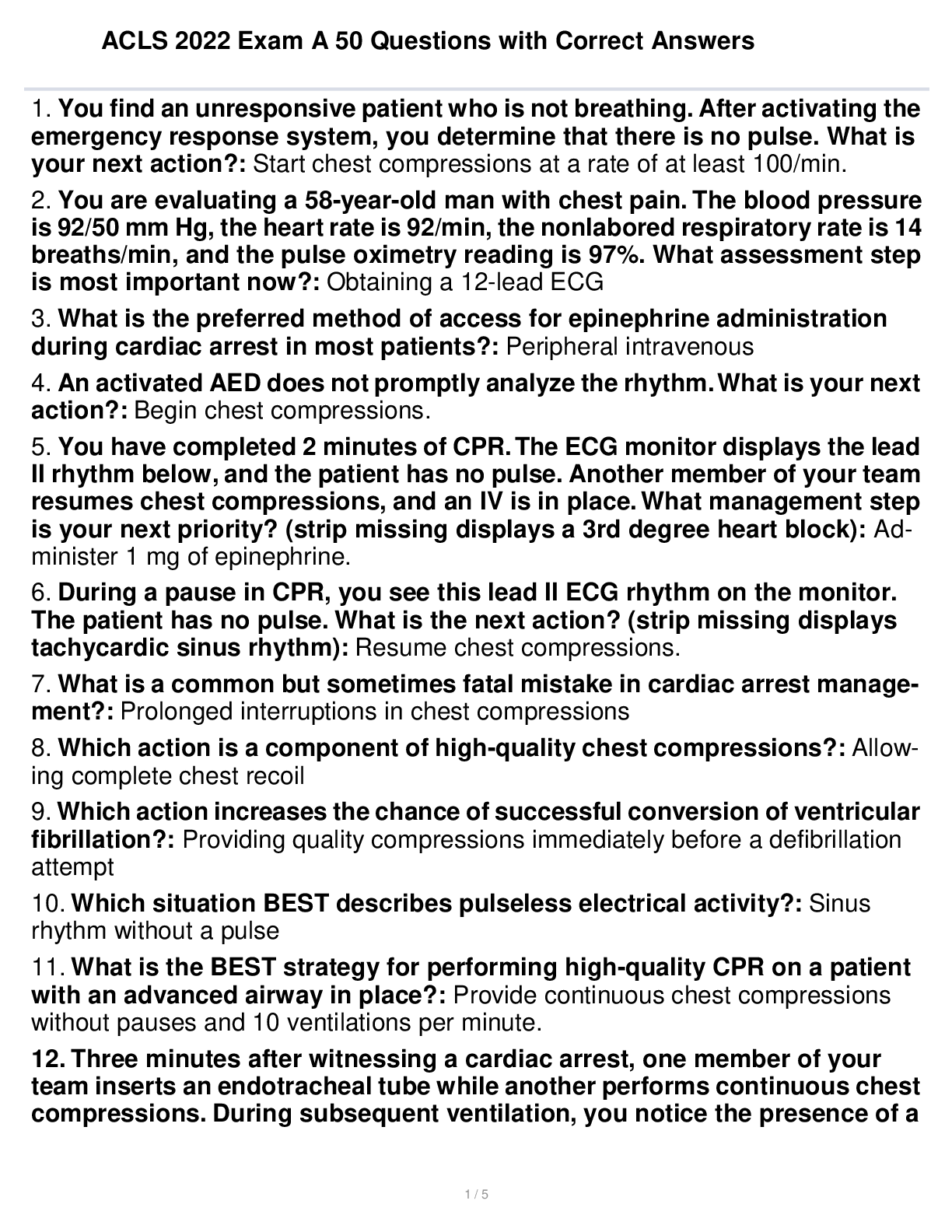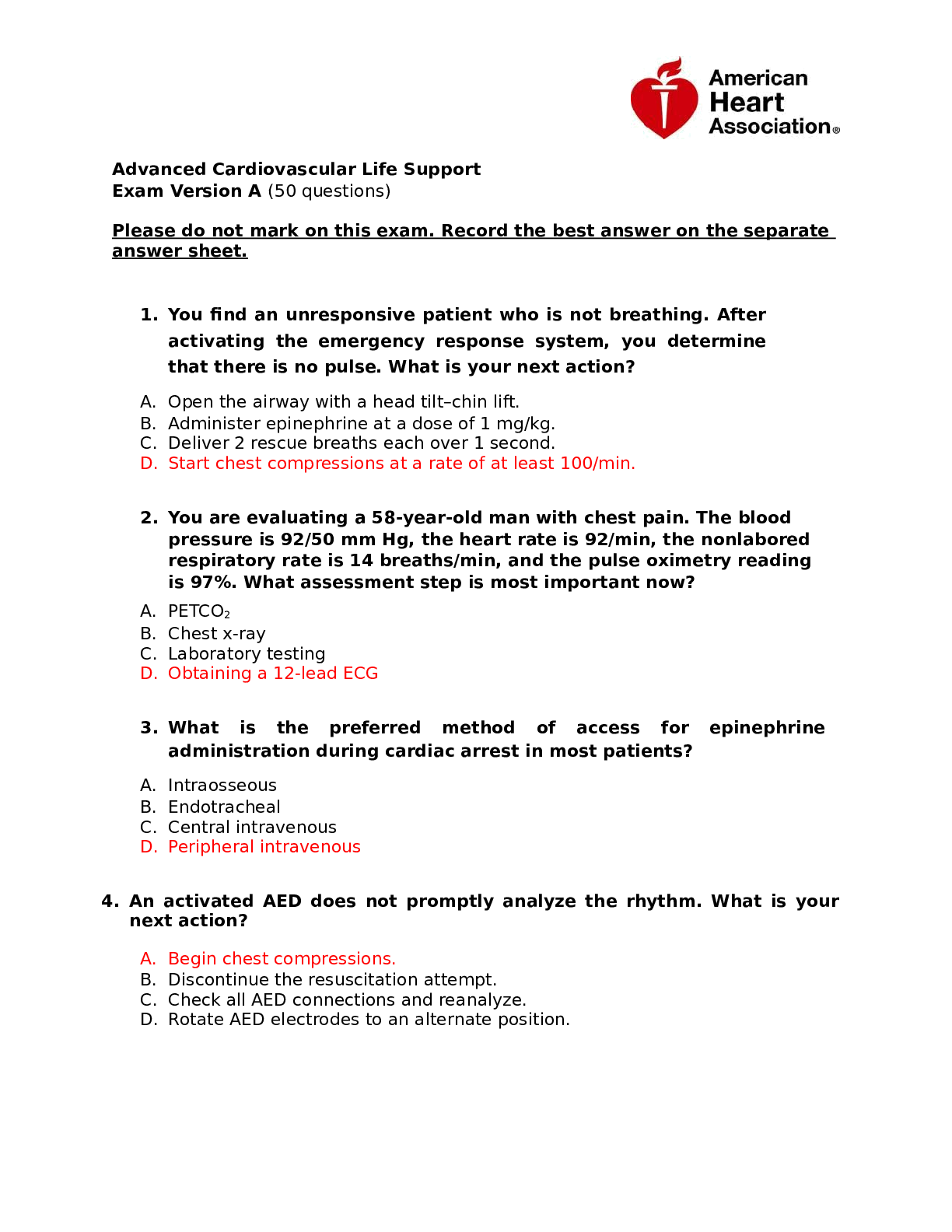*NURSING > QUESTIONS & ANSWERS > ACLS _Advanced Cardiovascular Life Support Exam Version A (50 questions). 2022/2023. Graded+ (All)
ACLS _Advanced Cardiovascular Life Support Exam Version A (50 questions). 2022/2023. Graded+
Document Content and Description Below
Advanced Cardiovascular Life Support Exam Version A (50 questions) Please do not mark on this exam. Record the best answer on the separate answer sheet. 1. You find an unresponsive patient who is n... ot breathing. After activating the emergency response system, you determine that there is no pulse. What is your next action? A. Open the airway with a head tilt–chin lift. B. Administer epinephrine at a dose of 1 mg/kg. C. Deliver 2 rescue breaths each over 1 second. D. Start chest compressions at a rate of at least 100/min. 2. You are evaluating a 58-year-old man with chest pain. The blood pressure is 92/50 mm Hg, the heart rate is 92/min, the nonlabored respiratory rate is 14 breaths/min, and the pulse oximetry reading is 97%. What assessment step is most important now? A. PETCO2 B. Chest x-ray C. Laboratory testing D. Obtaining a 12-lead ECG 3. What is the preferred method of access for epinephrine administration during cardiac arrest in most patients? A. Intraosseous B. Endotracheal C. Central intravenous D. Peripheral intravenous 4. An activated AED does not promptly analyze the rhythm. What is your next action? A. Begin chest compressions. B. Discontinue the resuscitation attempt. C. Check all AED connections and reanalyze. D. Rotate AED electrodes to an alternate position.5. You have completed 2 minutes of CPR. The ECG monitor displays the lead II rhythm below, and the patient has no pulse. Another member of your team resumes chest compressions, and an IV is in place. What management step is your next priority? A. Give 0.5 mg of atropine. B. Insert an advanced airway. C. Administer 1 mg of epinephrine. D. Administer a dopamine infusion. 6. During a pause in CPR, you see this lead II ECG rhythm on the monitor. The patient has no pulse. What is the next action? A. Establish vascular access. B. Obtain the patient’s history. C. Resume chest compressions. D. Terminate the resuscitative effort. 7. What is a common but sometimes fatal mistake in cardiac arrest management? A. Failure to obtain vascular access B. Prolonged periods of no ventilations C. Failure to perform endotracheal intubation D. Prolonged interruptions in chest compressions 8. Which action is a component of high-quality chest compressions? A. Allowing complete chest recoil B. Chest compressions without ventilation C. 60 to 100 compressions per minute with a 15:2 ratio D. Uninterrupted compressions at a depth of 1½ inches9. Which action increases the chance of successful conversion of ventricular fibrillation? A. Pausing chest compressions immediately after a defibrillation attempt B. Administering 4 quick ventilations immediately before a defibrillation attempt C. Using manual defibrillator paddles with light pressure against the chest D. Providing quality compressions immediately before a defibrillation attempt 10. Which situation BEST describes pulseless electrical activity? A. Asystole without a pulse B. Sinus rhythm without a pulse C. Torsades de pointes with a pulse D. Ventricular tachycardia with a pulse 11. What is the BEST strategy for performing high-quality CPR on a patient with an advanced airway in place? A. Provide compressions and ventilations with a 15:2 ratio. B. Provide compressions and ventilations with a 30:2 ratio. C. Provide a single ventilation every 6 seconds during the compression pause. D. Provide continuous chest compressions without pauses and 10 ventilations per minute. 12. Three minutes after witnessing a cardiac arrest, one member of your team inserts an endotracheal tube while another performs continuous chest compressions. During subsequent ventilation, you notice the presence of a waveform on the capnography screen and a PETCO2 level of 8 mm Hg. What is the significance of this finding? A. Chest compressions may not be effective. B. The endotracheal tube is no longer in the trachea. C. The patient meets the criteria for termination of efforts. D. The team is ventilating the patient too often (hyperventilation). 13. The use of quantitative capnography in intubated patients A. allows for monitoring of CPR quality. B. measures oxygen levels at the alveoli level. C. determines inspired carbon dioxide relating to cardiac output. D. detects electrolyte abnormalities early in code management.14. For the past 25 minutes, an EMS crew has attempted resuscitation of a patient who originally presented in ventricular fibrillation. After the first shock, the ECG screen displayed asystole, which has persisted despite 2 doses of epinephrine, a fluid bolus, and high-quality CPR. What is your next treatment? A. Apply a transcutaneous pacemaker. B. Administer 1 mg of intravenous atropine. C. Administer 40 units of intravenous vasopressin. D. Consider terminating resuscitative efforts after consulting medical control. 15. Which is a safe and effective practice within the defibrillation sequence? A. Stop chest compressions as you charge the defibrillator. B. Be sure oxygen is not blowing over the patient’s chest during the shock. C. Assess for the presence of a pulse immediately after the shock. D. Commandingly announce “clear” after you deliver the defibrillation shock. 16. During your assessment, your patient suddenly loses consciousness. After calling for help and determining that the patient is not breathing, you are unsure whether the patient has a pulse. What is your next action? A. Leave and get an AED. B. Begin chest compressions. C. Deliver 2 quick ventilations. D. Check the patient’s mouth for the presence of a foreign body. 17. What is an advantage of using hands-free defibrillation pads instead of defibrillation paddles? A. Hands-free pads deliver more energy than paddles. B. Hands-free pads increase electrical arc. C. Hands-free pads allow for a more rapid defibrillation. D. Hands-free pads have universal adaptors that can work with any machine. 18. What action is recommended to help minimize interruptions in chest compressions during CPR? A. Continue CPR while charging the defibrillator. B. Perform pulse checks immediately after defibrillation. C. Administer IV medications only when delivering breaths. D. Continue to use an AED even after the arrival of a manual defibrillator. 19. Which action is included in the BLS Survey? A. Early defibrillation B. Advanced airway management C. Rapid medication administration D. Preparation for therapeutic hypothermia [Show More]
Last updated: 9 months ago
Preview 1 out of 11 pages
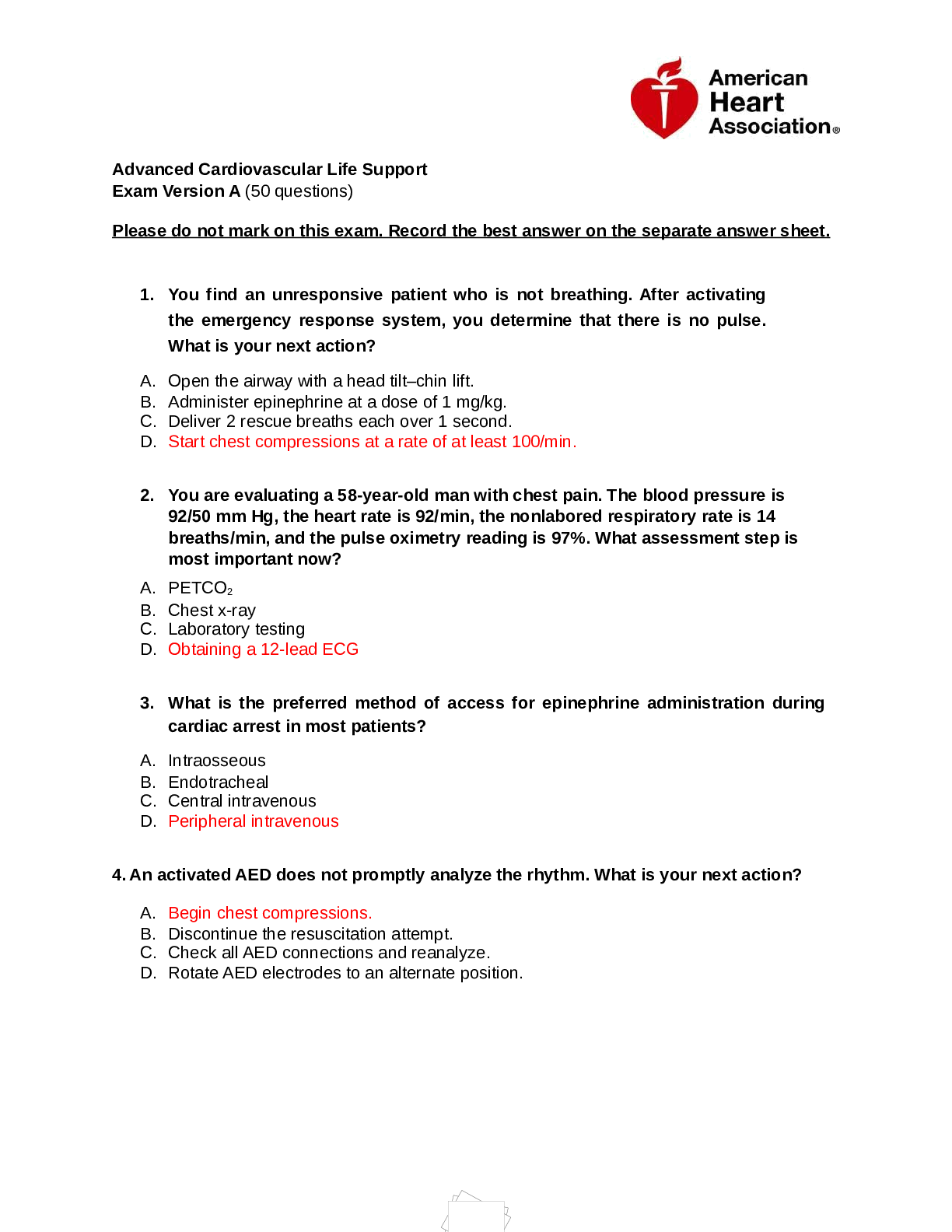
Reviews( 1 )

by believer32us · 9 months ago
Document information
Connected school, study & course
About the document
Uploaded On
Aug 30, 2022
Number of pages
11
Written in
Additional information
This document has been written for:
Uploaded
Aug 30, 2022
Downloads
3
Views
694




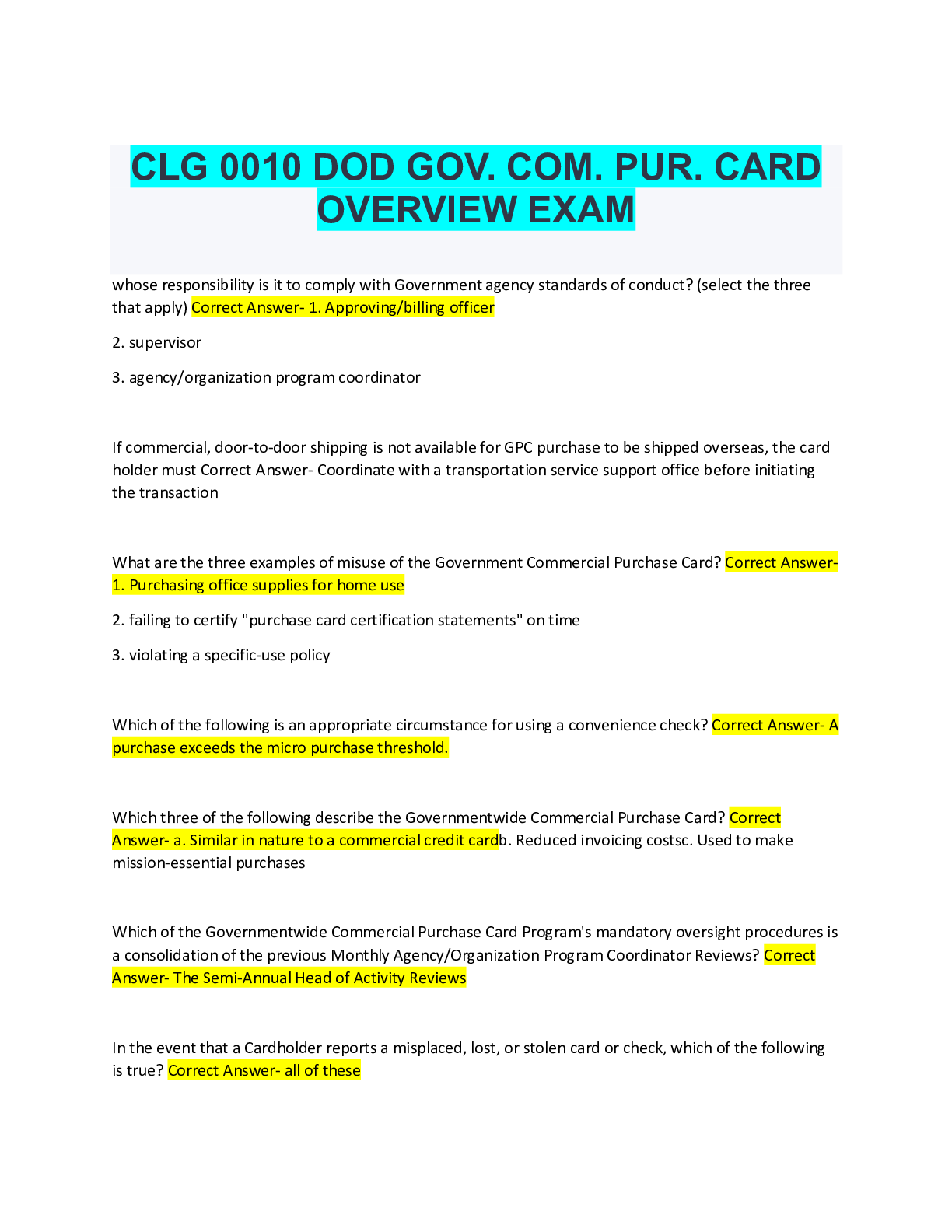


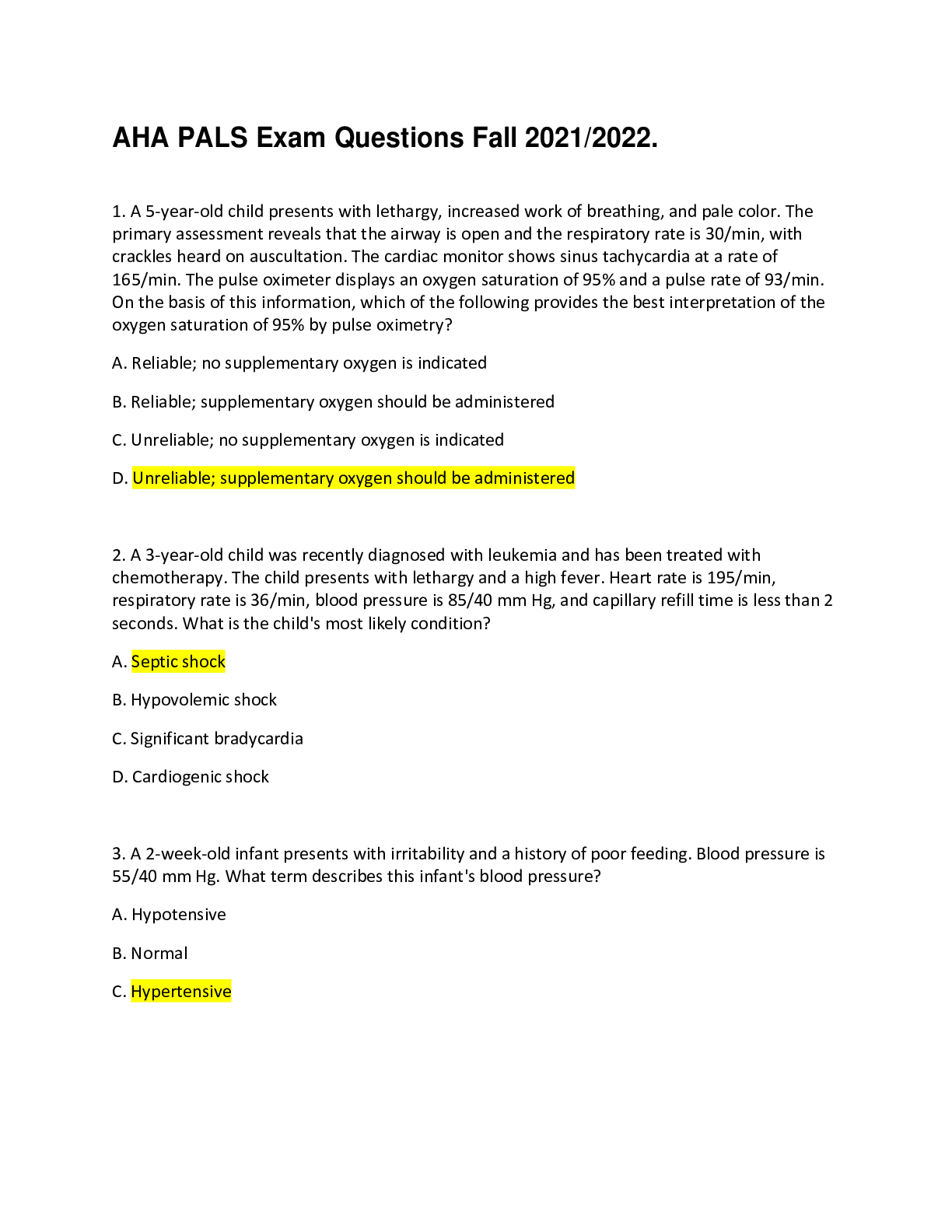

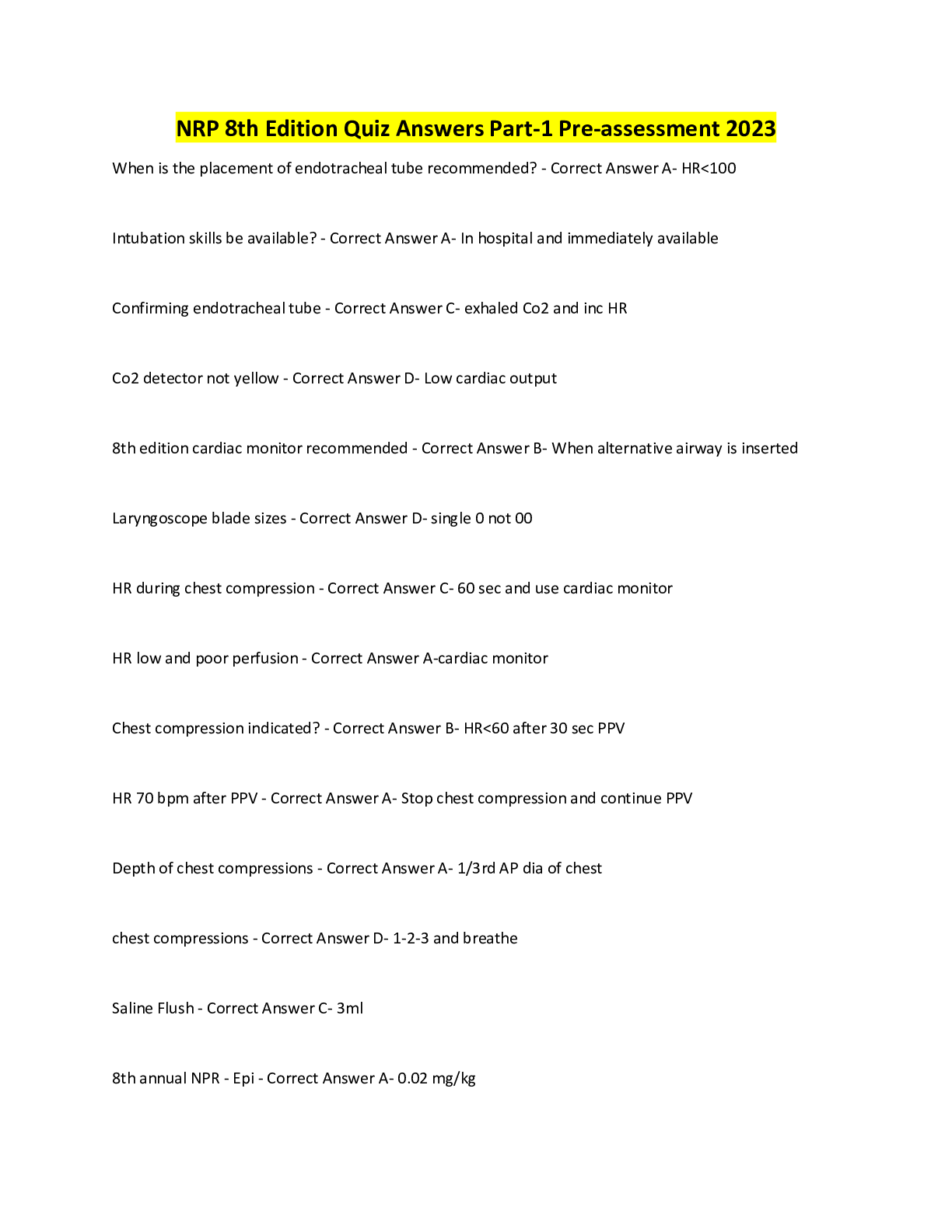

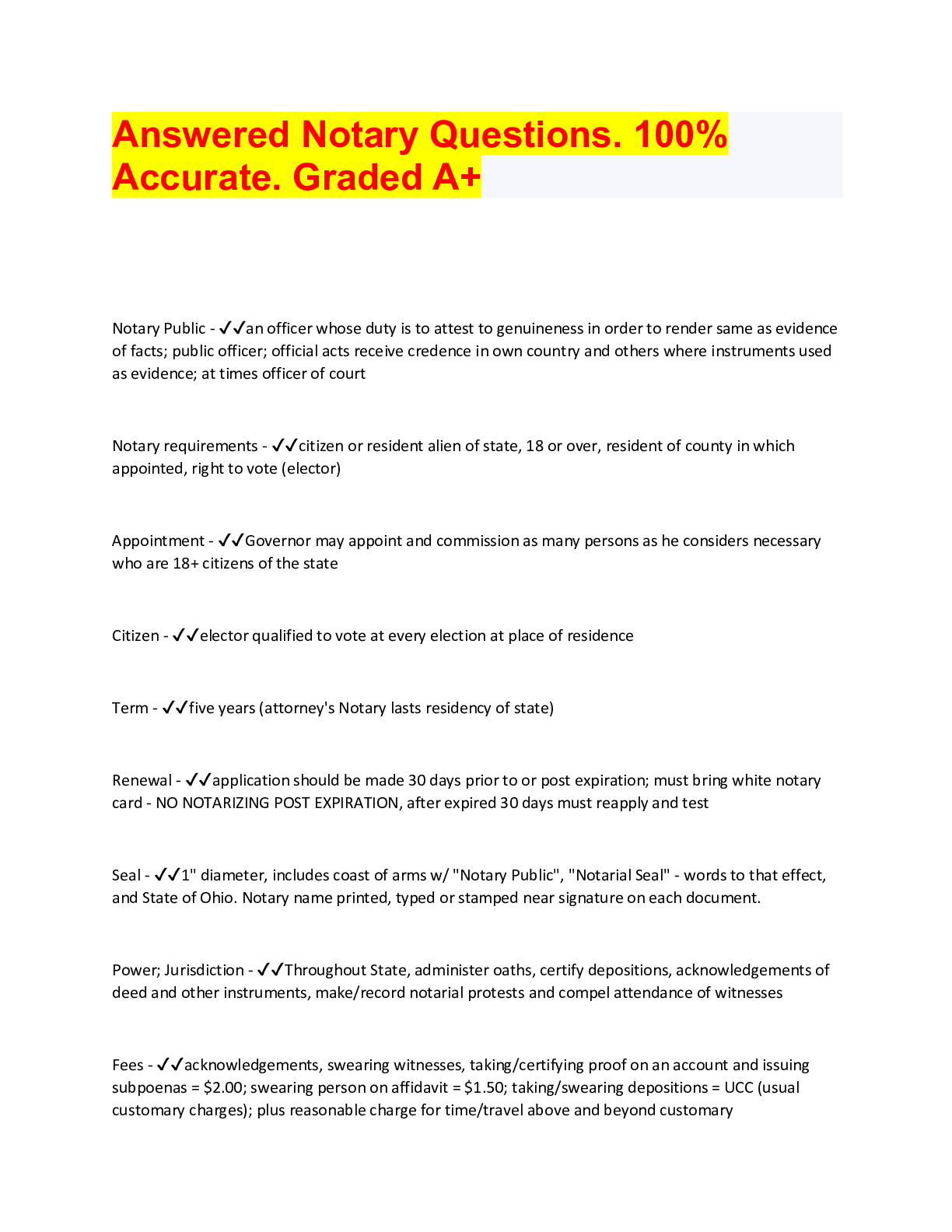

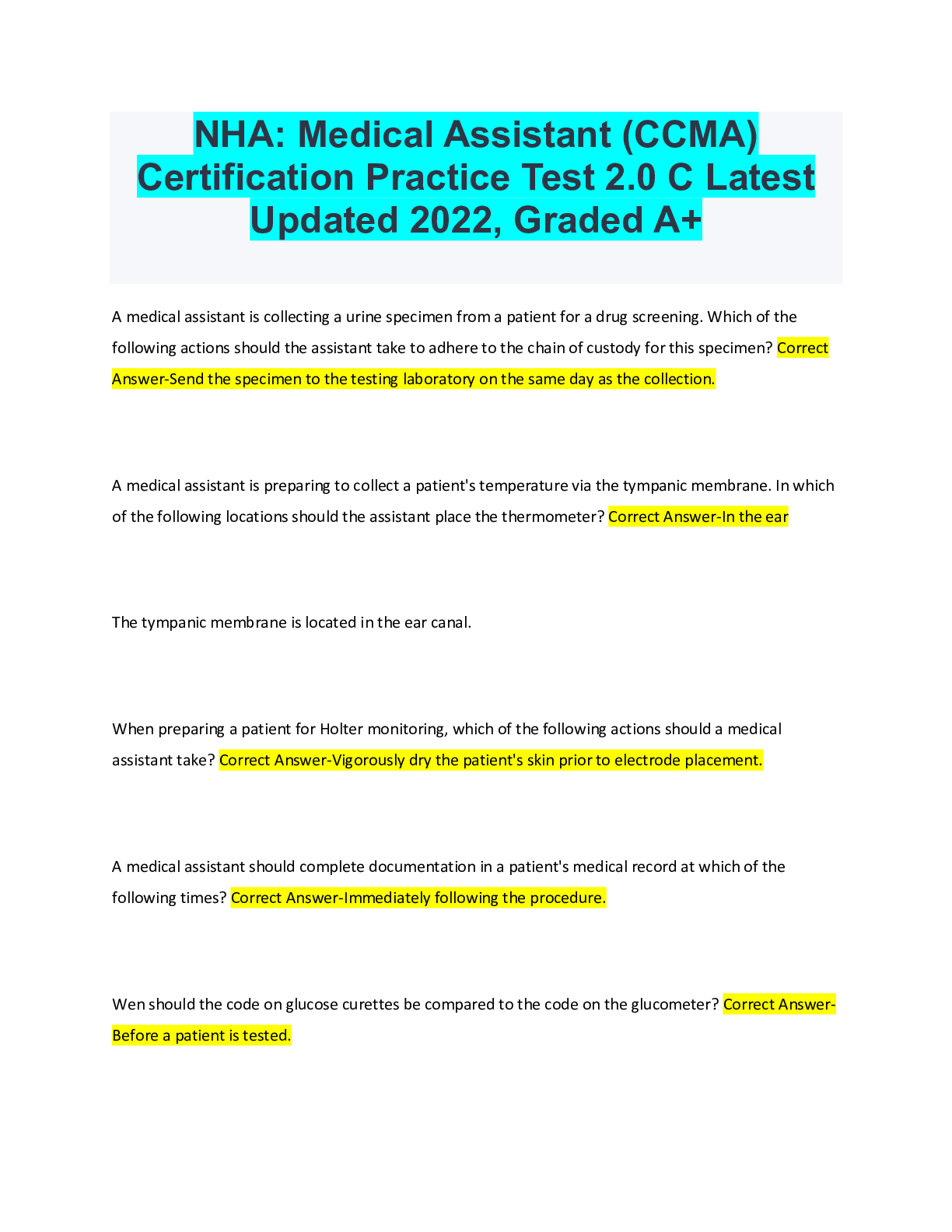
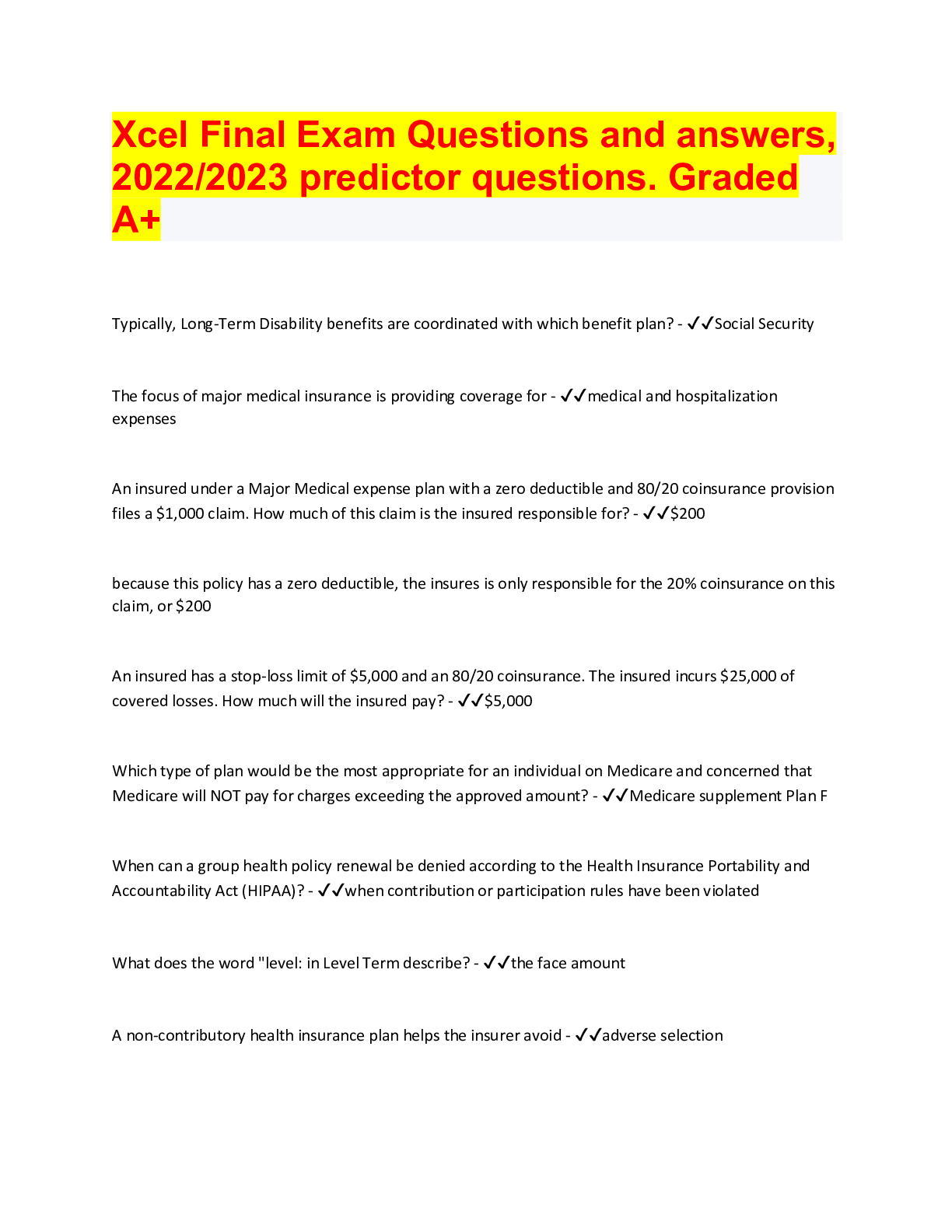
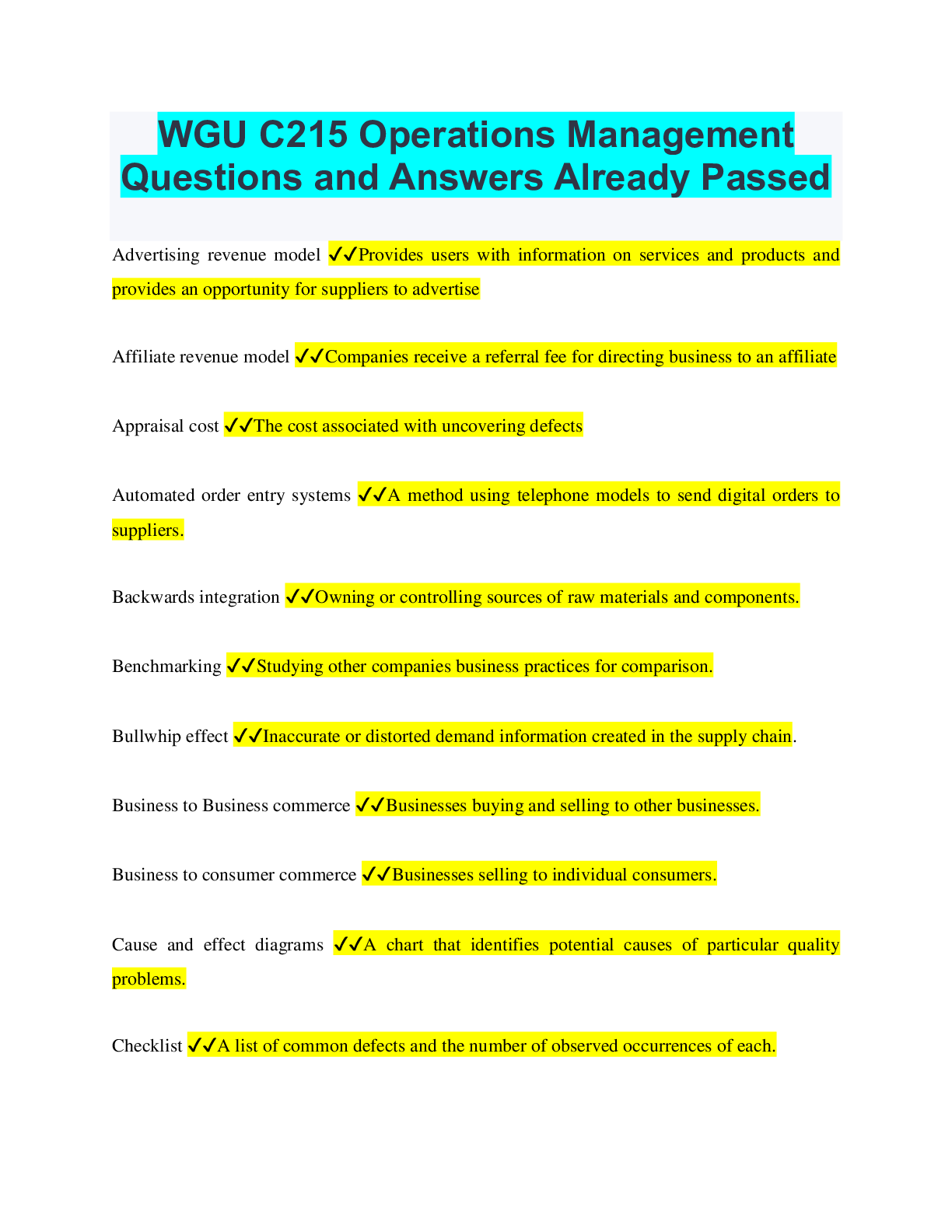
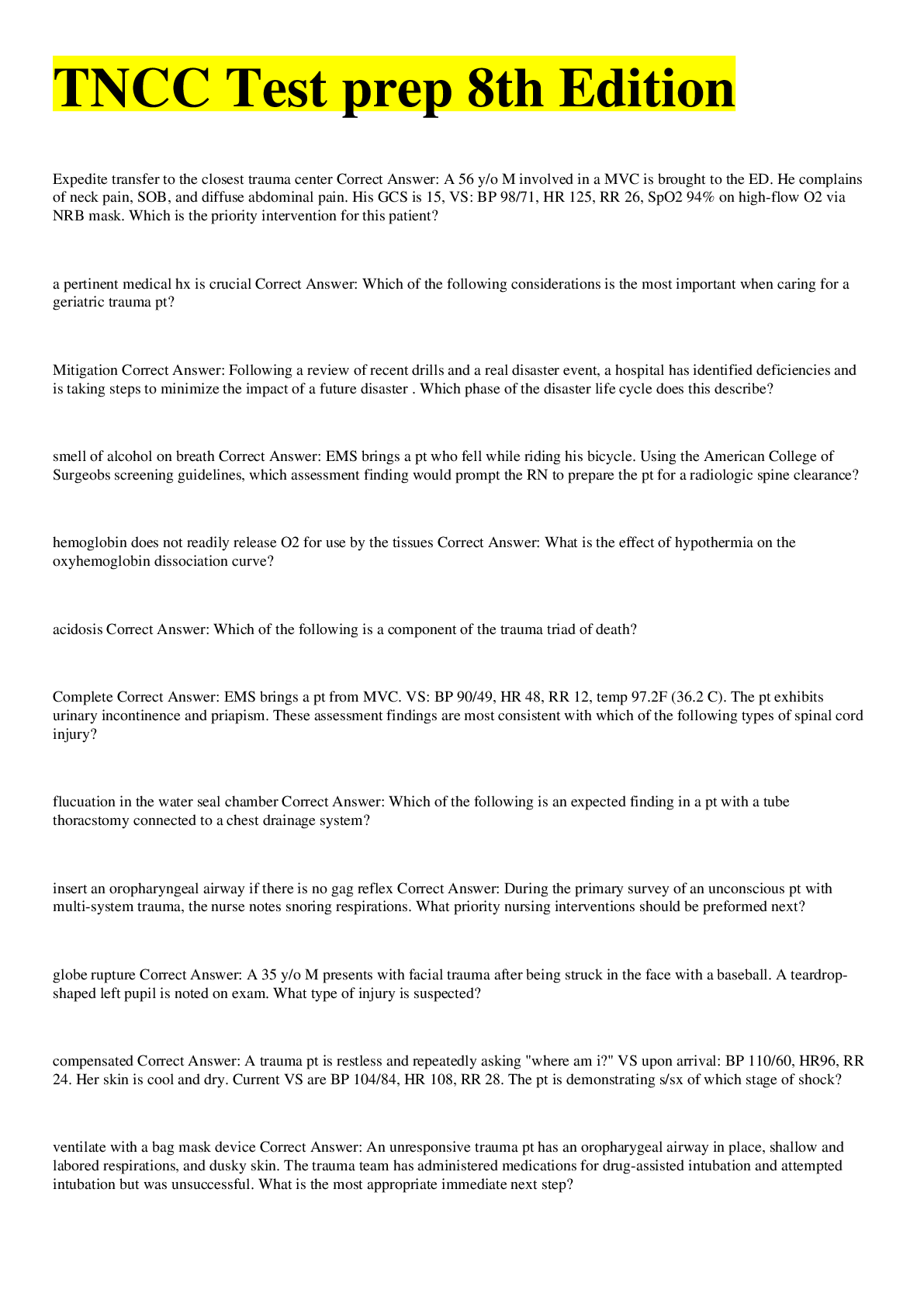
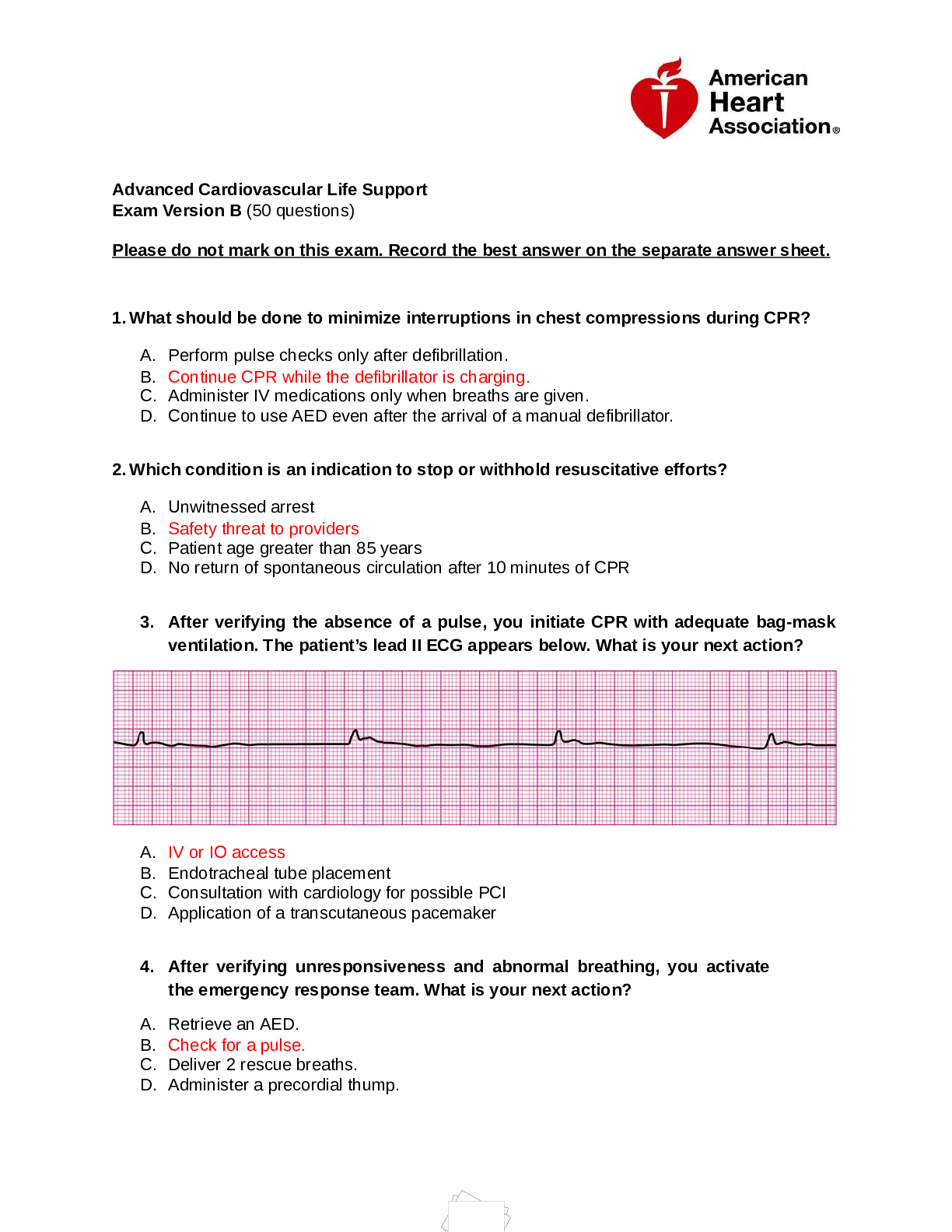
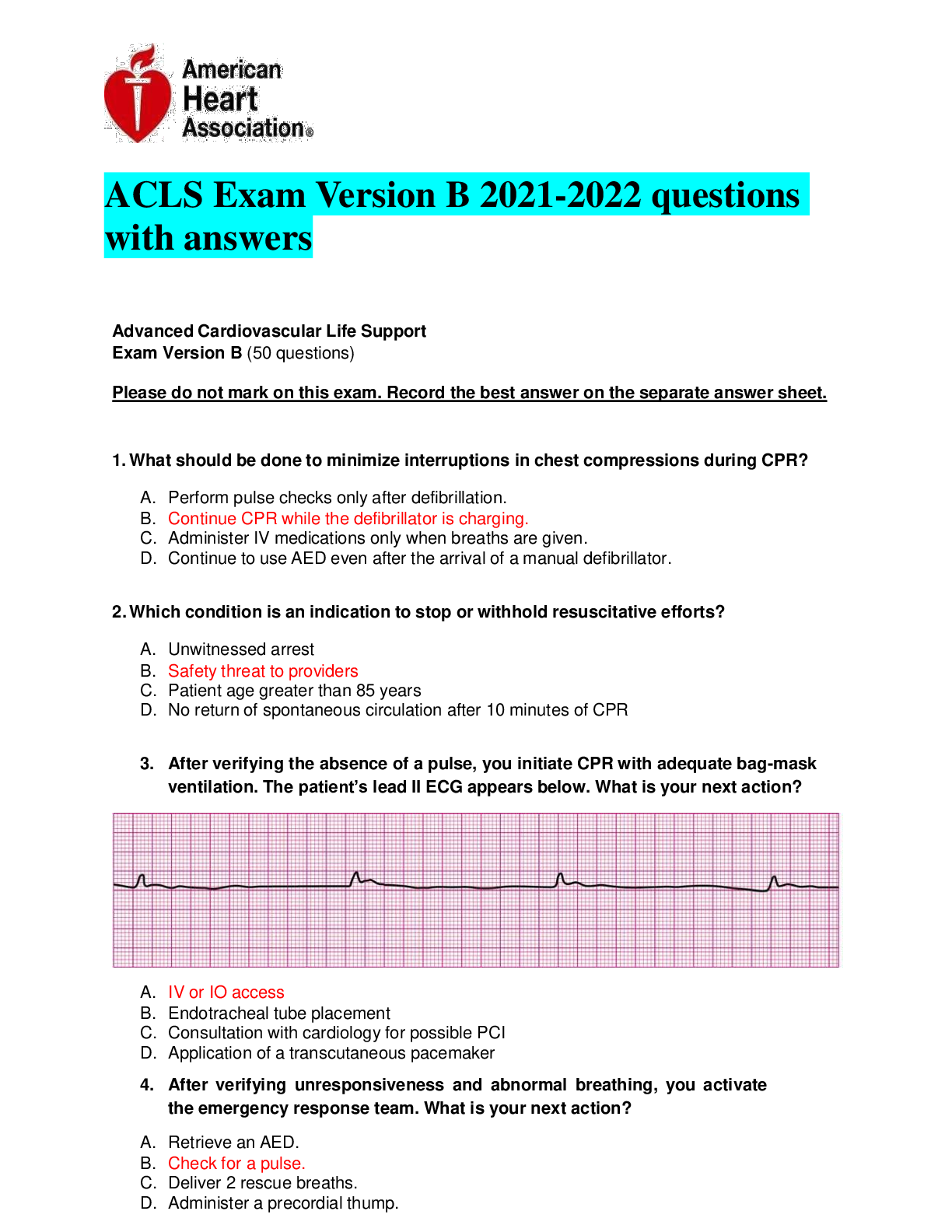
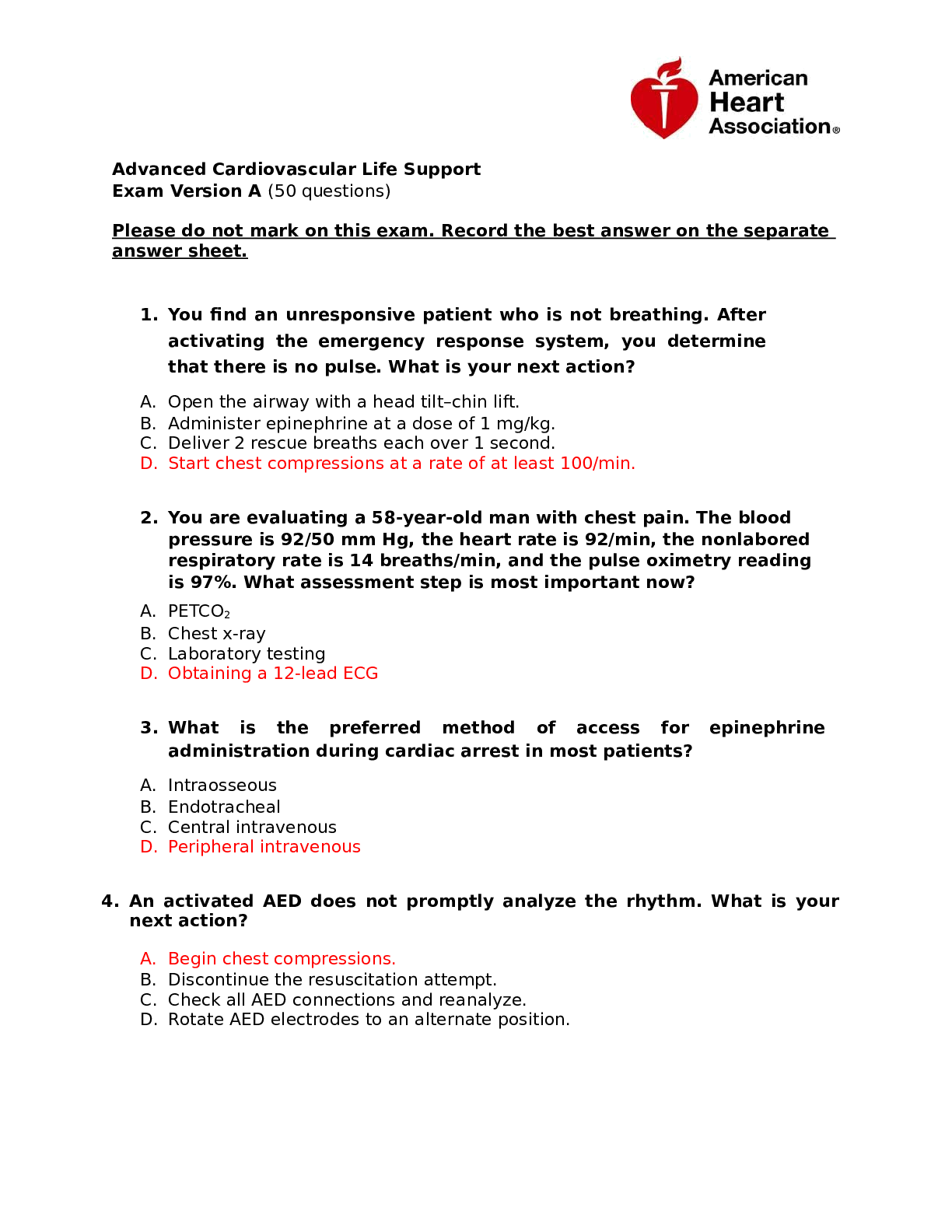

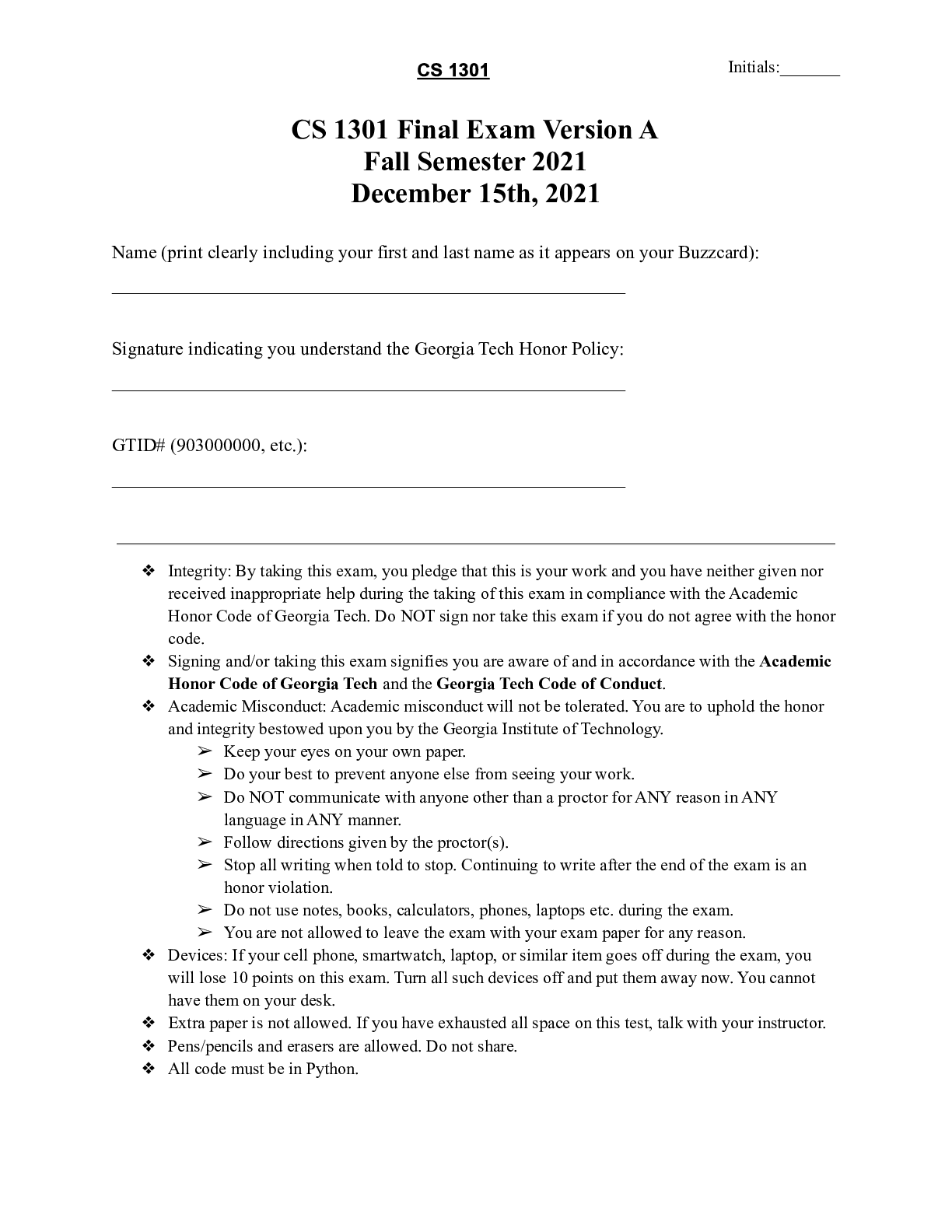
.png)

